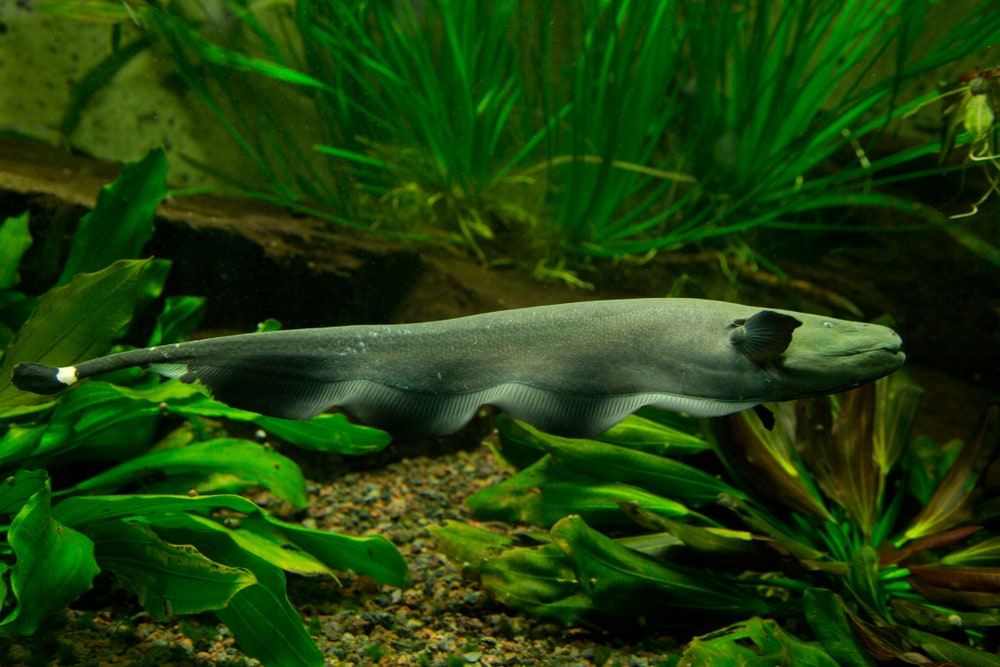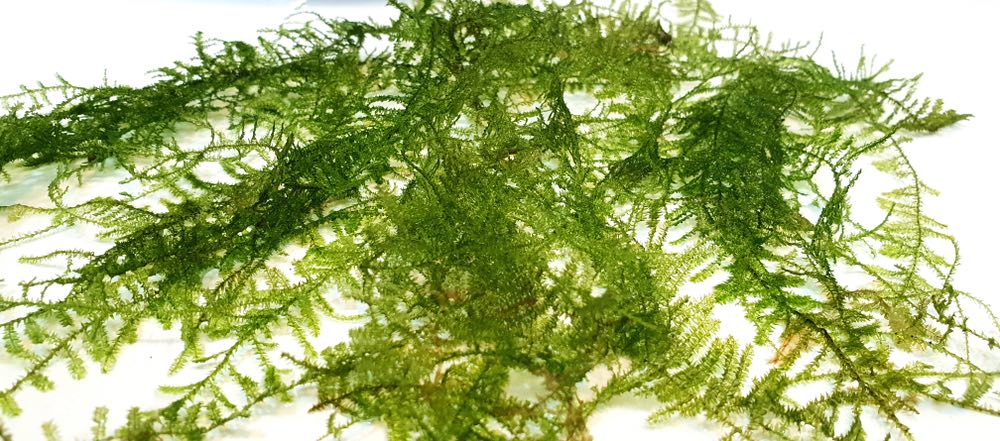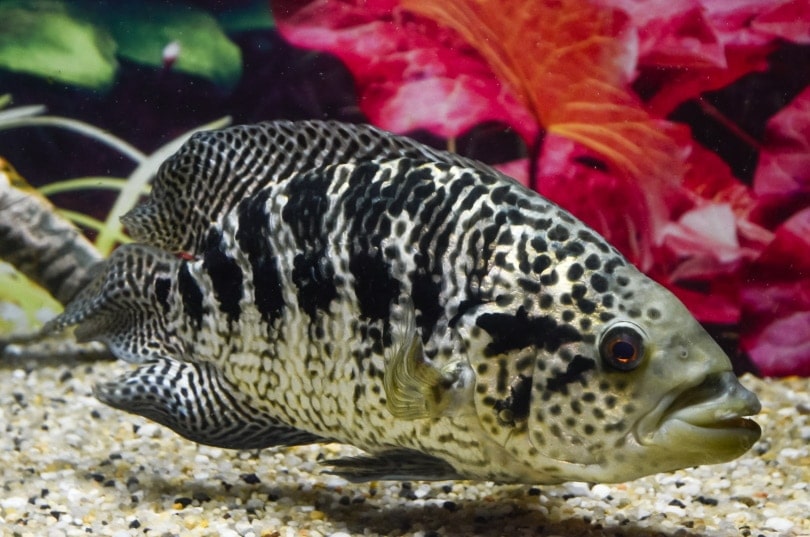Clown Pleco: Care Guide, Types, Size, Lifespan & Pictures

Updated on
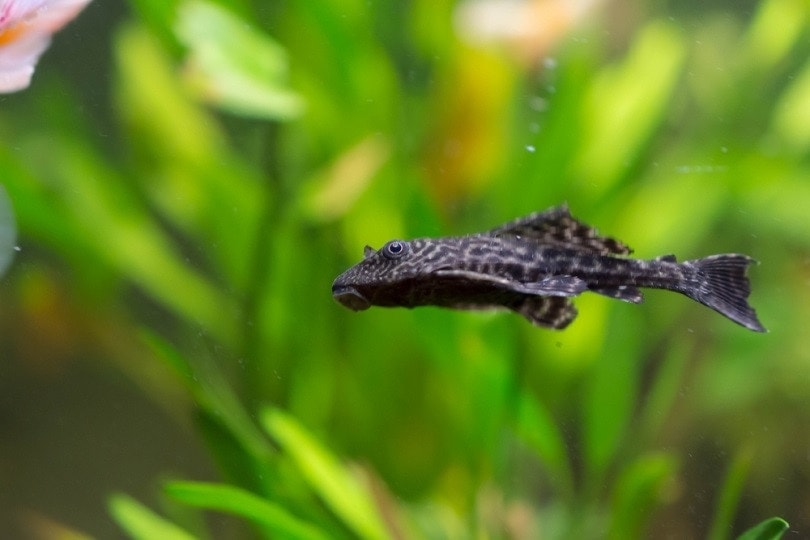
The Clown pleco (planaque maccus) is a popular bottom-dwelling freshwater fish that does well in tropical community tanks. These neat-looking forms of Plecostomus are on the smaller side, but undeniably, one of the most attractive plecos in the hobby.
Clown plecos will spruce up the bottom of your community aquarium. Due to the their small stature, we highly recommend them in place of the common Plecostomus. Clowns are significantly smaller and easier to manage than the larger species. They will happily nibble at wood and plants within the tank, and this leads them to add activity along the foreground of your aquarium.
Quick Facts About the Clown Pleco
| Species Name: | Panaque maccus |
| Family: | Armored catfishes |
| Care Level: | Easy |
| Temperature: | 23°C to 27.5°C |
| Temperament: | Peaceful |
| Color Form: | brown, black, grey, yellow, white |
| Lifespan: | 10 to 15 years |
| Size: | 4 inches |
| Diet: | Omnivore |
| Minimum Tank Size: | 25 gallons |
| Tank Set-Up: | Tropical Freshwater: Wood & plants |
| Compatibility: | Community |
Clown Pleco Overview
Clown plecos are native to Venezuela and found mainly in the Apure and Caroni river basins, but found in Columbia too. These heavily wooded areas feature abundant vegetation along the shores of the strong current rivers, which suits the Clowns just fine!
These fish are adapted to see through murky waters with poor visibility, and they’re hardy enough for smaller community tanks. Clowns typically live between 10 to 15 years, which is common with smaller types of Plecostomus. This allows you to spend a significant amount of time with your fish and develop a unique bond.
By providing your Clown pleco with a balanced and quality diet, a large tropical tank set up with compatible tankmates, you can expect your Clowns to live a decent lifespan. Although these fish are hardy, it does not mean they will thrive in subpar care. If your fish is in a constant state of stress, you can expect their lifespan to drastically shorten and experience a visible decrease in their health.
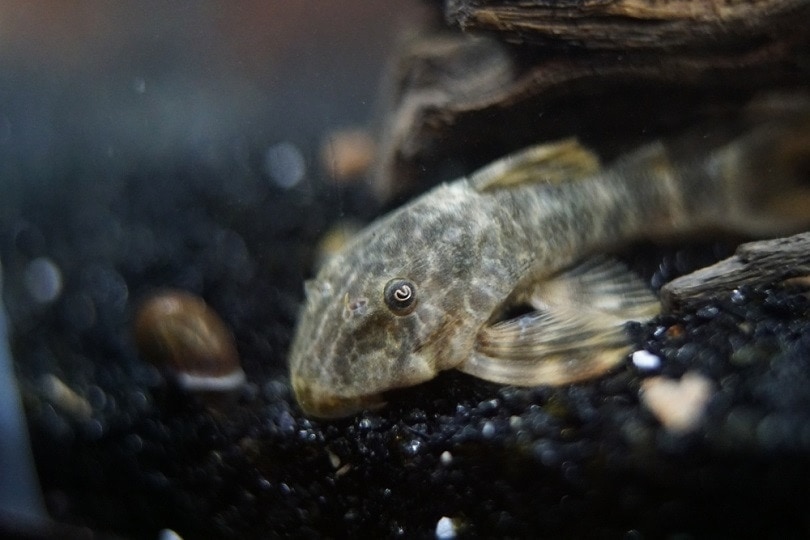
How Much Do Clown Plecos Cost?
Clown plecos can be purchased from pet stores, online, or even reputable breeders. They are inexpensive to maintain, therefore, their overall sale price is adjusted to accommodate their size, health, or quality. You can expect to pay between $4 to $12 for a Clown pleco.
If you decide to purchase your Clown pleco online, the shipping costs will be included. This can make your fish appear more expensive, but fast shipping for livestock is essential. If you pay for shipping that takes several days, your pleco may not arrive alive or in good condition.
Typical Behavior & Temperament
Clown plecos are peaceful and tranquil. They do not intentionally search for fights with other tank mates, and they mind their business by moving around the bottom of their aquarium. Their peaceful temperament includes them gliding along the bottom of the tank, underneath, and plants or wooden logs like driftwood.
Clowns rarely take an interest in their tank mates, which makes them susceptible to being bullied by other fish. They spend most of their time scavenging along the bottom and slowly moving throughout the bottom of the aquarium. They are commonly found on algae patches and driftwood within the tank.
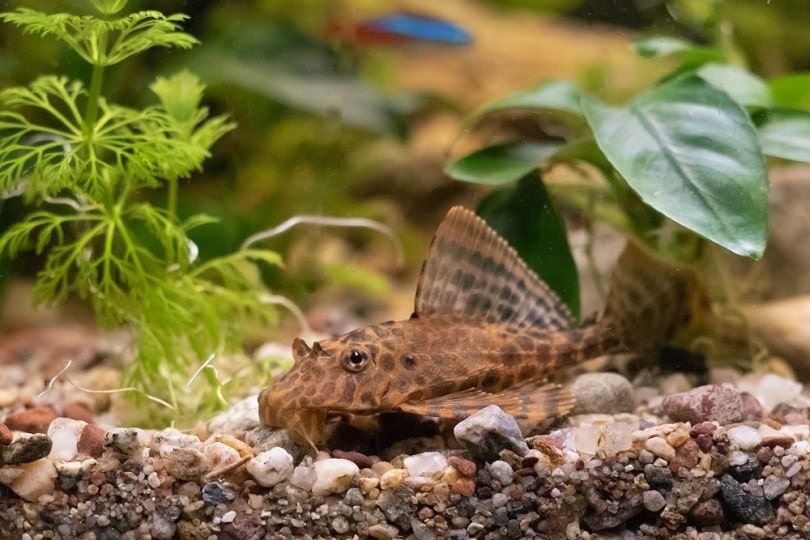
Appearance & Varieties
The Clown plecos’ appearance will feature a variety of distinct patterns and intricate colorations, so they stand out more than other types of plecos. The Clown pleco has a primary base of black and brighter colored bands that stretch around their whole body in different patterns. The bright sections are yellow or white bands. The bands can occasionally be a whitish orange color or dappled with yellow amongst the white. The overall appearance of the Clown pleco is determined by their health and nutritional status.
Genetics also plays a role in determining the overall vibrancy and vivid appearance of their body. The color can be modified by providing them with proper care from their juvenile stage. Wild Clown plecos seem to have more vibrant colors than those kept in captivity. This is mainly due to their stress-free environment where they have a large amount of space, their wild form diet, and ideal water conditions.
The body of a Clown pleco is like nearly all forms of Plecostomus. They have a thick body, head, and a large dorsal fin that can be described as a sail. Since they are descendants of the armored catfish, they have a body back and a slim dorsal fin that slims out till the caudal peduncle.
The pectoral fins of the Clown pleco are significantly large pectoral fins that help them stay adjacent to pieces of wood. The caudal fin can be described as fully splayed out and large.
When the fish is resting, they may begin to compress slightly. Clown plecos grow to a maximum size of 4 inches. Although they are usually smaller between 2.5 to 3 inches. If the fish is kept in a large ideal tank, you may have your Clown pleco grow to the large size of 4 inches. Their small size is more ideal for aquarists who are interested in keeping small tanks that will not fit other plecos that can grow to 13 inches.
How to Take Care of Clown Plecos
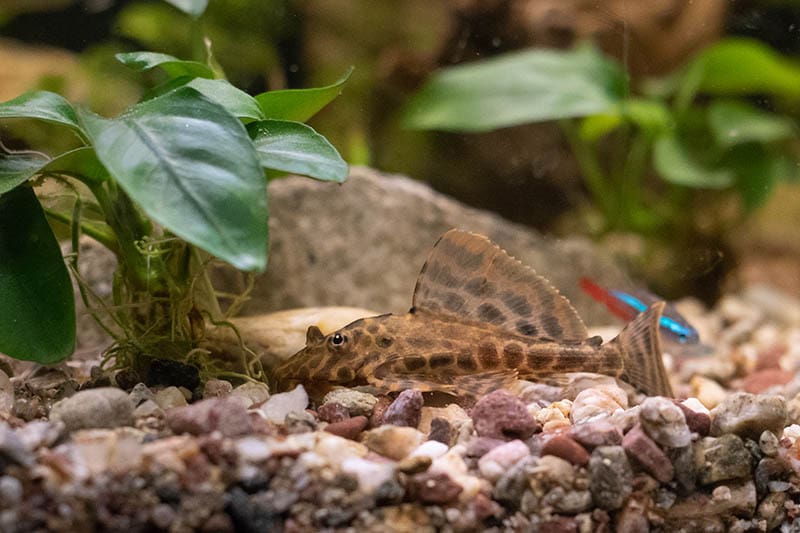
Habitat, Tank Conditions & Setup
Clown plecos are easy to care for and make good bottom cleaners for beginners.
Tank/aquarium size: Due to their smaller size, they can be kept in a tank with a minimum size of 25 gallons. This size can house a fully grown 3-inch Clown pleco comfortably. If you keep a community tank, the tank should be a minimum of 40 gallons to ensure the conditions are not cramped.
By providing your Clown pleco with a large tank, you have more space to add different types of wooden logs, plants and reduce small tank syndrome amongst the inhabitants.
Water temperature & pH: Clown plecos are flexible with their conditions and can be housed in a heated tank with a temperature range between 23°C to 27.5°C. The temperature should not fluctuate, and it is best to keep the temperature at a range all the tank mates meet. The pH should be acidic and kept between 6.8 to 7.6.
Substrate: Rough substrates can scratch and injure the underside of your Clown pleco. Although their back is armored, their stomach consists of soft flesh. Rough gravel can cause wounds along their stomach which can easily lead to infection. Keeping aquarium sand or large round pebbles work best for these fish.
Plants: Clown plecos appreciate a variety of live plants in their aquarium. Plants such as amazon swords, Anubis, or hornwort works well. The tank should consist of a large piece of driftwood to mimic their natural environment.
Lighting: Since Clown plecos are adapted to murky waters, they are easily stressed and shy when their conditions are brightly lit. Avoid using bright artificial or natural lighting. If you place the tank in a brightly lit environment, you will notice your Clown pleco seeking shelter under decorations till nightfall.
Filtration: Clown plecos require a filter with a strong current. They come from strong flowing river basins and the current within the aquarium should replicate it. A filter is also essential to reduce waste and keep the water clean.
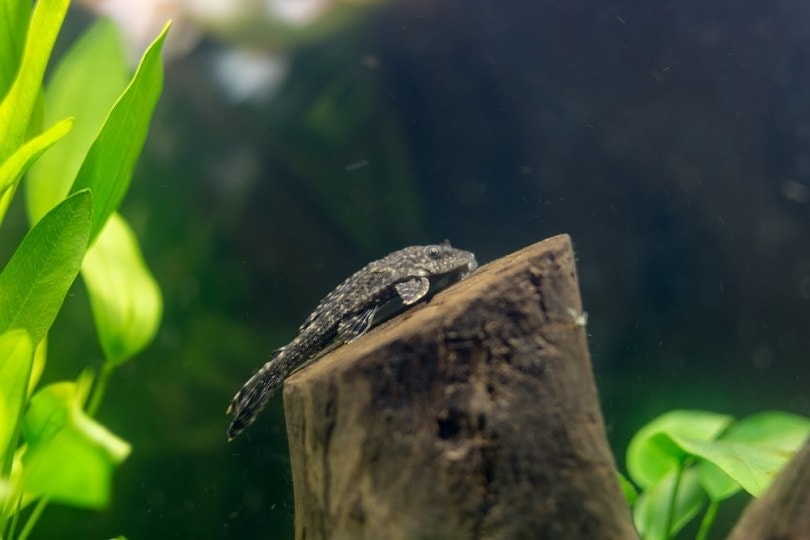
Are Clown Plecos Good Tank Mates?
Due to the Clown plecos peaceful and mellow nature, they can be housed with a variety of other peaceful community fish. They should not be housed with other large plecos as they are aggressive and territorial. Incompatible tank mates will harass and harm your Clown pleco while inducing unnecessary stress amongst the inhabitants. There are a handful of tankmates that can be paired with them. Below is a general guideline to provide you with ideas on our top tank mates for Clown plecos.
- Cory catfish
- Minnows
- Rasboras
- Dwarf gourami
- Ember tetras
- Danios
- Livebearers
- Mystery snails
- Acaras
- Bala shark
- Angelfish
- Common pleco
- Cichlids
- Oscars
- Red-tailed shark
- Rainbow shark
- Goldfish
- Betta fish
What to Feed Your Clown Pleco
A Clown plecos diet should consist of a variety of foods they naturally eat in the wild. Their diet should be balanced and contain a variety of woods, decaying vegetable matter, dead fish, and algae.
Since these fish are constantly consuming food throughout the day, you should avoid overfeeding them with commercial foods. Quality nutrition enhances their color and adult size. Their diet should consist of the main components which are algae and wood. Both foods are not for supplementation purposes and are mandatory parts of their diet.
Ensure you keep aquarium-safe driftwood and allow algae to grow in places within the aquarium. When it comes to feeding commercial foods to your Clown pleco, sinking pellets or wafers are the ideal food.
Choose a quality commercial food that is specifically formulated for bottom feeders. Sinking shrimp and algae pellets are best. You can also feed algae wafers that sink to the bottom. This will ensure your Clown pleco is receiving optimal nutrition. You can feed cucumber, zucchini, and peas as an occasional treat.
Keeping Your Clown Pleco Healthy
Keeping your Clown plecos healthy is relatively easy if you keep them in proper condition. Below is a summary of our top pointers when it comes to keeping your Clown pleco healthy.
- Water conditions: Ensure your Clown pleco is kept in acidic waters with a neutral ph. The water should be kept clean and filtered. Tropical temperatures are necessary for the health of your Clown pleco.
- Diet: The dietary requirements should contain the ideal guaranteed analysis and a variety of supplements. If your Clown pleco is kept on a poor diet, they will develop poorly and become deformed.
- Tankmates: Keep your Clown pleco with peaceful tankmates on our recommended tank mate lists. Small and peaceful fish work best that swim around the middle or surface of the tank.
- Driftwood: Driftwood is an essential part of their diet and if it is denied from their diet, they will be in poor health.
- Heater: Tropical conditions should be met to ensure that your Clown pleco will not be susceptible to disease, stress, or poor digestion.
- A large tank: Keep your Clown pleco in a large and spacious tank. The tank should be able to house all the inhabitants, decorations, and equipment without it being cramped. Clown plecos should not be housed in a vase, bowl, biorb, or any spherical-shaped aquaria.
- Water renewal: Regularly test the ammonia, nitrites, and nitrate levels in the water. Do frequent water changes to keep the water free of pollutants and spikes in the water’s parameters.
Breeding
Breeding Clown plecos in captivity is not an easy task. There are various opinions on how to breed these fish successfully and ethically. Most reputable breeders will claim it is too hard to even attempt to breed them without a plethora of knowledge on their natural breeding requirements. This will include documents, books, and PDFs. They are difficult to breed if you are only familiar with the basics of both their breeding and care.
You want to set up a breeding tank and place the mating pair inside. Try to replicate their current and wild tank setup. Add lots of decorations and driftwood for them to seek shelter and feel comfortable enough to mate. Gradually lower the water temperature and raise the pH level slowly over several hours.
The female will lay eggs under a log or inside a cave that the males will fertilize. The males will be observed guarding and protecting the eggs until they hatch. The Clown pleco fry should be fed small portions of their parent’s diet.
Are Clown Plecos Suitable For Your Aquarium?
If you are looking for a small, attractive bottom feeder that adds tranquility to a freshwater tropical aquarium, the Clown pleco meets the requirements. The tank should be large and appropriately decorated. Ensure each tank mate is compatible and will not take an interest in your Clown pleco. They are good substitutes for those who do not want a large bottom feeder that has the potential to grow over 12 inches.
By providing a natural setup with plenty of wooden logs, caves, and plants, the Clown pleco will comfortably settle into your aquarium. We hope this article has informed you of the proper care requirements Clown plecos require.
Check out some of our other favorite freshwater fish care guides:
Featured Image Credit: MIKITO SHIRAI, Shutterstock




